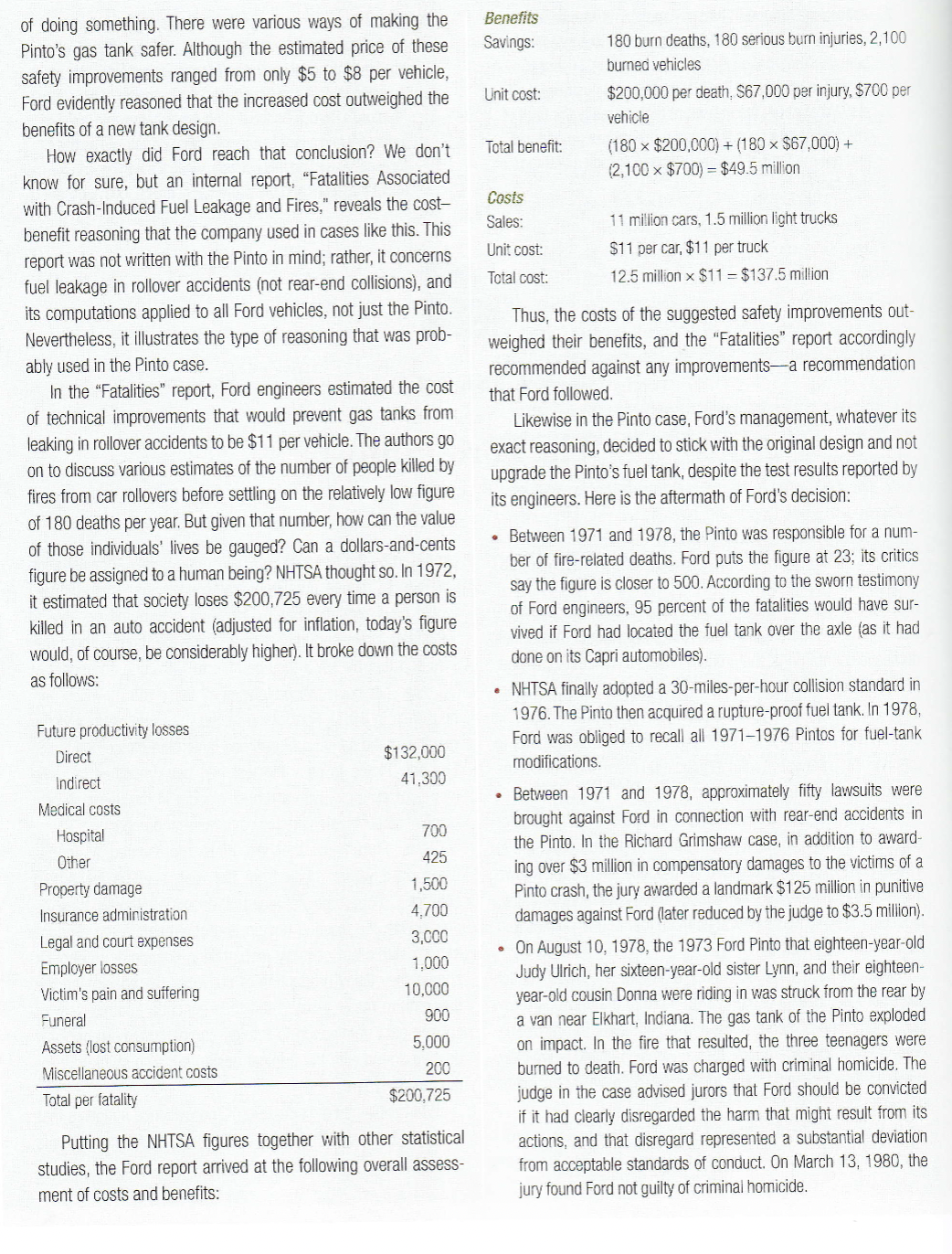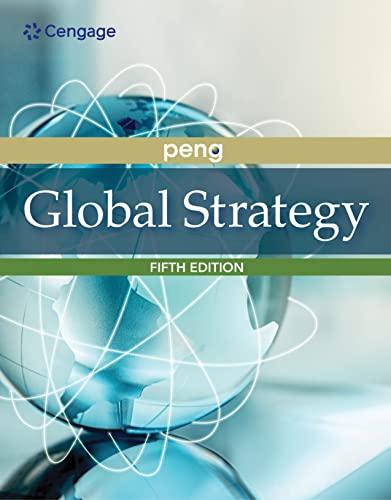Question
2. Suppose Ford officials were asked to justify their decision. What moral principles do you think they would invoke? Assess Ford's handling of the Pinto


2. Suppose Ford officials were asked to justify their decision. What moral principles do you think they would invoke? Assess Ford's handling of the Pinto from the perspective of each of the moral theories discussed in this chapter.
4. Is cost-benefit analysis a legitimate tool? What role, if any, should it play in moral deliberation? Critically assess the example of cost-benefit analysis given in the case study. Is there anything unsatisfactory about it? Could it have been improved upon in some way?
7. Would it have made a difference if the savings resulting from not improving the Pinto gas tank had been passed on to Ford's customers? Could a rational customer have chosen to save a few dollars and risk having the more dangerous gas tank? What if Ford had told potential customers about its decision?
11. Is it wrong for business to sell a product that is not as safe as it could be, given current technology? Is it wrong to sell a vehicle that is less safe than competing products on the marked? Are there limits to how far automakers must go in the name of safety?
The Ford l'into THERE WAS A TIME WHEN THE "MADE IN JAPAN" label brought a predictable smirk of superiority to the face of most Americans. The quality of most Japanese products usually was as low as their price. In fact, few imports could match their domestic counterparts, the proud products of Yankee know-how. But by the late 1960s, an invasion of foreign-made goods chis- eled a few worry lines into the countenance of U.S. industry. In Detroit, worry was fast fading to panic as the Japanese, not to mention the Germans, began to gobble up more and more of the subcompact auto market. Never one to take a backseat to the competition, Ford Motor Company decided to meet the threat from abroad head-on. In 1968, Ford executives decided to produce the Pinto. Known inside the company as "Lee's car," after Ford president Lee lacocca, the Pinto was to weigh no more than 2,000 pounds and cost no more than $2,000.20 Eager to have its subcompact ready for the 1971 model year, Ford decided to compress the normal drafting-board-to- showroom time of about three-and-a-half years into two. The compressed schedule meant that any design changes typically made before production-line tooling would have to be made during it. Before producing the Pinto, Ford crash-tested various pro- totypes, in part to learn whether they met a safety standard proposed by the National Highway Traffic Safety Administration (NHTSA) to reduce fires from traffic collisions. This standard would have required that by 1972 all new autos be able to withstand a rear-end impact of 20 miles per hour without fuel loss and that by 1973 they be able to withstand an impact of 30 miles per hour. The prototypes all failed the 20-miles-per- hour test. In 1970, Ford crash-tested the Pinto itself, and the result was the same: ruptured gas tanks and dangerous leaks. The only Pintos to pass the test had been modified in some way for example, with a rubber bladder in the gas tank or a piece of steel between the tank and the rear bumper. Thus, Ford knew that the Pinto represented a serious fire hazard when struck from the rear, even in low-speed collisions. Ford officials faced a decision. Should they go ahead with the existing design, thereby meeting the produc- tion timetable but possibly jeopardizing consumer safety? Or should they delay production of the Pinto by redesigning the gas tank to make it safer and thus concede another year of subcompact dominance to foreign companies? Ford not only pushed ahead with the original design but also stuck to it for the next six years. What explains Ford's decision? The evidence suggests that Ford relied, at least in part, on cost-benefit reasoning, which is an analysis in monetary terms of the expected costs and benefits
Step by Step Solution
There are 3 Steps involved in it
Step: 1
The case study of the Ford Pinto presents several ethical and moral questions regarding Fords decision to produce the car despite known safety concerns Question 2 Justification by Ford Officials and M...
Get Instant Access to Expert-Tailored Solutions
See step-by-step solutions with expert insights and AI powered tools for academic success
Step: 2

Step: 3

Ace Your Homework with AI
Get the answers you need in no time with our AI-driven, step-by-step assistance
Get Started


